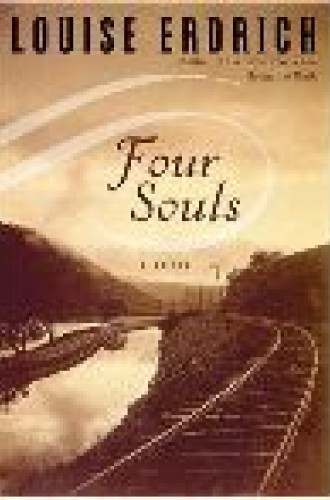Four Souls
One of the rewards of reading Louise Erdrich’s fiction is that she takes us into a world few people know, that of the Ojibwe people, who follow traditional ways while also living under the influence of Christianity. Like Faulkner’s fictional Yoknapatawpha County, the territory of Erdrich’s novels (this is her ninth) is rich in history and populated with complex characters.
Four Souls brings back Fleur Pillager, a major character in Tracks, an earlier novel. Here Erdrich explores the meaning—the levels and nuances—of forgiveness through the voices and experiences of several characters. Alternating chapters are narrated by Nanapush, Fleur’s adoptive father, and Polly Elizabeth Gheen, a white woman Fleur meets and eventually befriends. The novel concludes with the voice of Margaret, Nanapush’s wife. This movement between various points of view and through different locations and periods of time reflects both the complexity of the novel’s characters and the circular pattern of Native American storytelling.
As the story opens, Fleur leaves the reservation for Minneapolis and St. Paul shortly after World War I. She takes her mother’s name, Anaquot (Four Souls), and heads for the mansion of the lumber baron who stole her land and destroyed its trees. She wants restitution and revenge. Erdrich describes Native life and its destruction in concise images, mentioning “fine lace produced by young women whose mothers had once worked the quills of porcupines and dyed hairs of moose together into intricate clawed flowers and strict emblems before they died of measles, cholera, smallpox, tuberculosis, and left their daughters dexterous and lonely to the talents of nuns.”
Fleur gets her chance, but “the closer she got to the man she’d come to destroy, the muddier grew her intentions.” Fleur is not the only character whose hatred turns into love; Polly, the lumber baron’s sister-in-law, changes her heart toward a servant and concludes, “Once a person drops the scales of prejudiced certainty and doubts appear, there is no telling how far a heart can open.”
Another major narrative thread involves the ongoing conflict between Nanapush and Margaret. He laments the effect the white man has had on his people: “Smallpox ravaged us quick, tuberculosis killed us slow, liquor made us stupid, religion meddled with our souls, but the bureaucrats did the worst and finally bored us to death.” A greater affliction, though, was greed. “There was no word in our language to describe this urge to own things we didn’t need,” Nanapush writes. Acquisition leads to his conflict with Margaret, in which “revenge ran away with us, and then it turned around and ran over us.”
A secondary theme, naming, combines Native and Christian spirituality. The novel’s moving conclusion incorporates baptismal imagery as Margaret performs a healing ceremony for Fleur, telling her “you are loved in creation though you tried to destroy yourself.” The ceremony allows Fleur to find a new name, and it fits with God’s word to Israel: “I have called you by name, you are mine” (Isa. 43:1). Erdrich brings alive characters who struggle through conflicts and tragedies and find healing and hope in a presence beyond themselves—a clear and powerful presence which she leaves unnamed.






